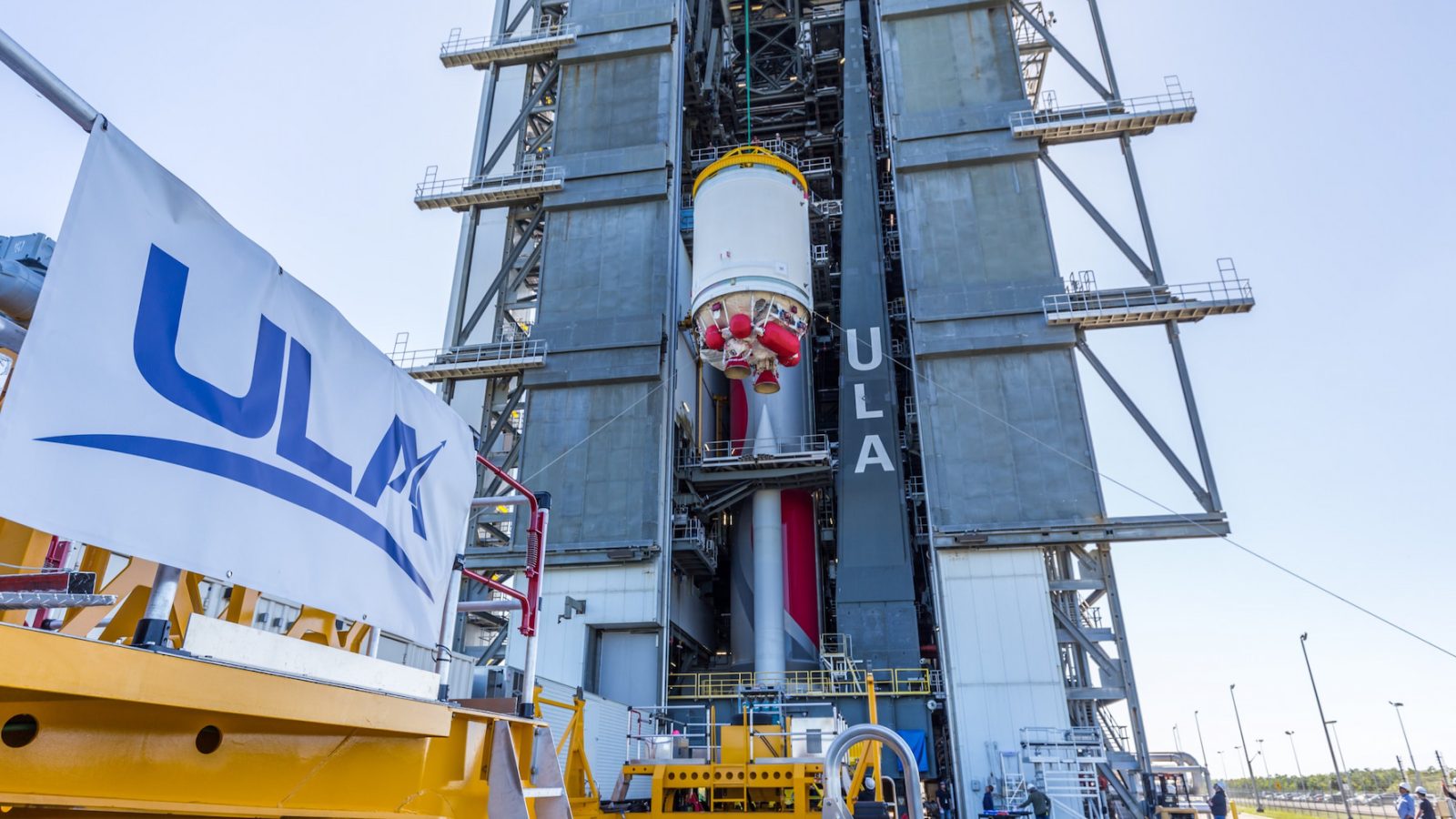
ULA hit another milestone in getting its first Vulcan rocket ready to launch with stacking a new Centaur V second stage on top of its booster at Cape Canaveral. This stage was rebuilt after one failed during a static fire earlier this year due to an unknown structural fault.
Vulcan gets its Centaur stacked
On Sunday, ULA teams stacked the Centaur V second stage at its vertical integration facility at Cape Canaveral Space Force Station, Florida. This is the last piece of the rocket (other than the payload and fairings) needing to be assembled ahead of launch.
Over the last month, ULA has been assembling its first Vulcan rocket to launch the Cert-1 mission with Astrobotic’s first Peregrine lunar lander on it. Both the Vulcan’s booster and strap on solid rocket motors have already been assembled at the VIF.
This Centaur arrived in Florida last week onboard Rocketship, ULA’s dedicated ship for transporting rocket parts to and from its factory in Alabama. This Centaur was just assembled back in Decatur, Alabama this month after ULA had to fix an issue found during a static fire earlier this year.
After the anomaly ULA had to destack the original Centaur V intended to launch and replace it with this one. Now the company will begin pre-launch tests including a wet dress rehearsal before attempting a launch on Christmas Eve.
Join our Discord Server: Join the community with forums and chatrooms about space! Also, directly support us via a Server Subscription!
ULA’s first home grown rocket
After years of development and delays, we are finally getting to see a Vulcan launch as soon as this year. While whether or not ULA can get Vulcan to launch during the short three day window this year is up in the air, there’s a chance Vulcan won’t be around for that long.
Vulcan was designed from the ground up to go head to head with SpaceX’s Falcon 9. ULA’s pervious rockets, the Atlas V and Delta IV, came from its parent companies, Lockheed Martin and Boeing. They were design for one market and one market only, US Government contracts.
This makes them extremely expensive, as that’s just what happens when you make a product for the government. It has the money to blow and when you’re a monopoly, like ULA was for a short time in the early 2000s, it will pay no matter the price.
This might all change if ULA is purchased from Lockheed Martin and Boeing. The company hasn’t directly confirmed it but reports from Ars Technica show that Blue Origin is leading in the opportunity to get ULA and all its technology.
This could completely fall apart still but the reason for Blue Origin to purchase ULA just makes a whole lot of sense. So even if Vulcan flies later this year or early next year, if Blue is the new owner, make bets Vulcan will eventually be phased out for New Glenn in the near future.
FTC: We use income earning auto affiliate links. More.

Comments